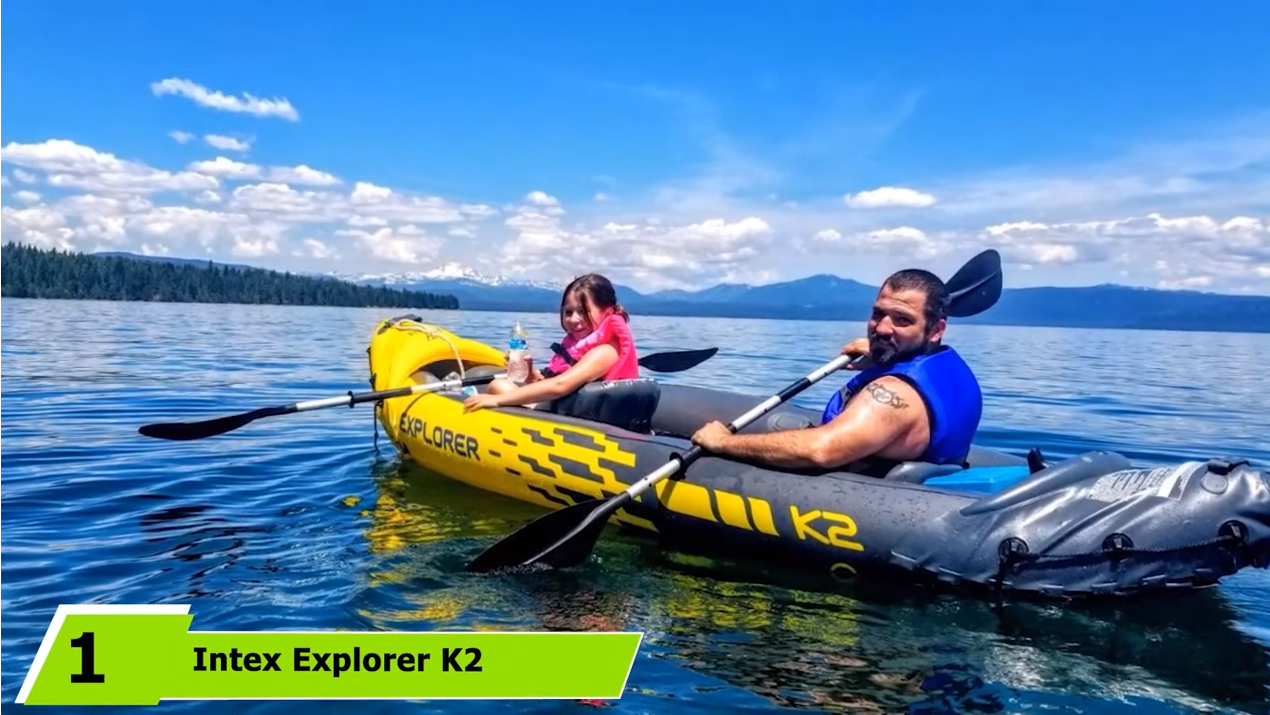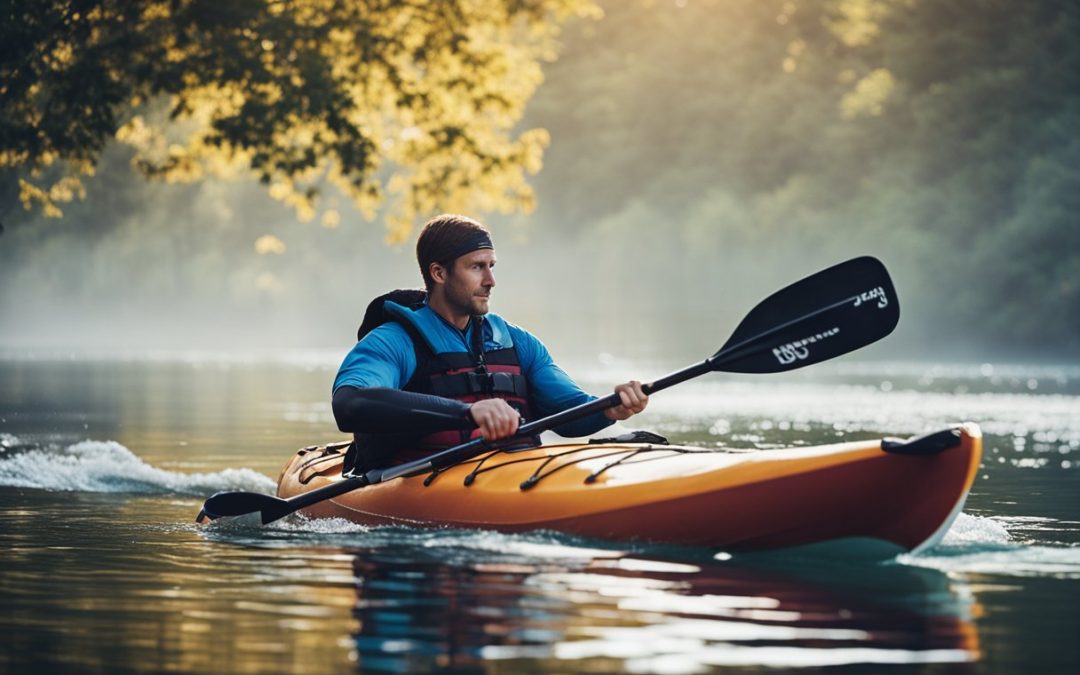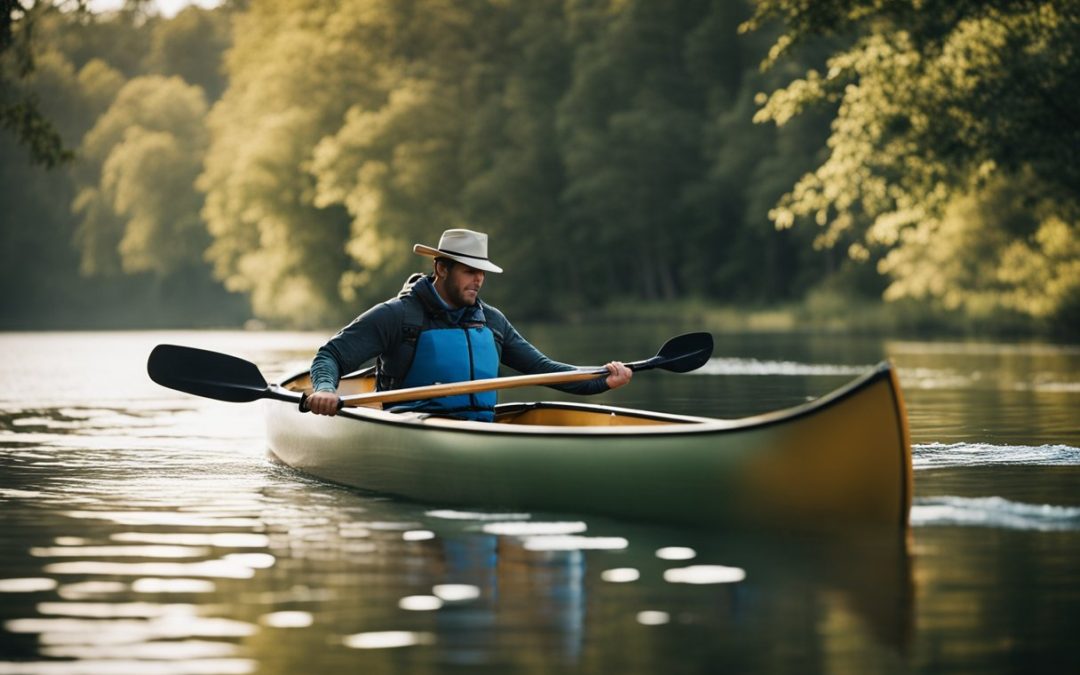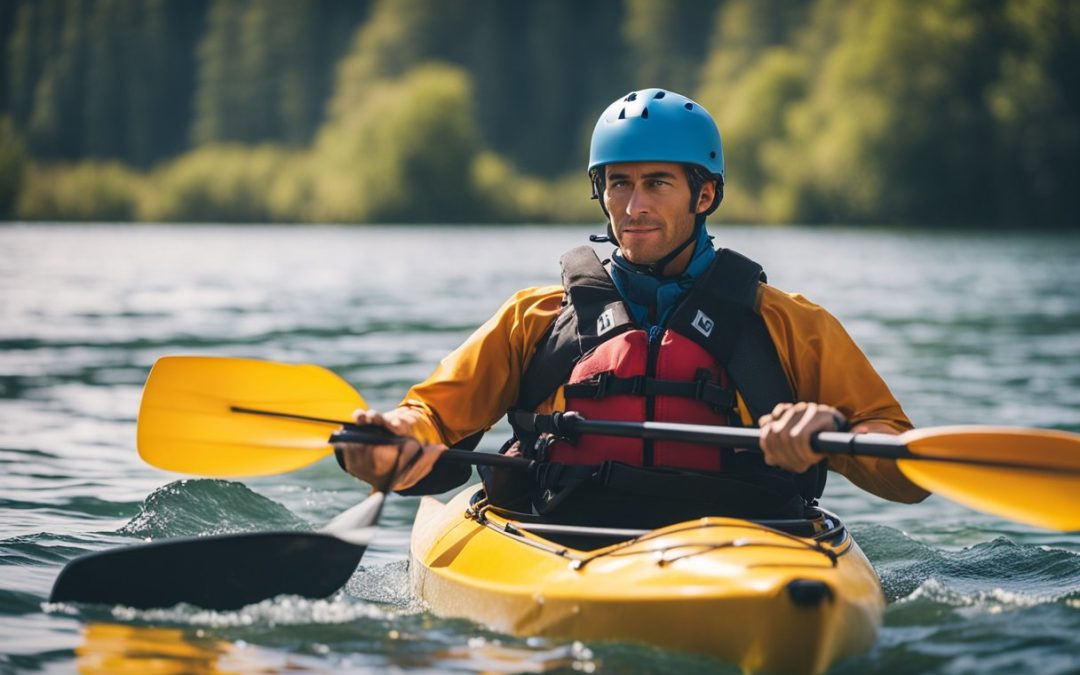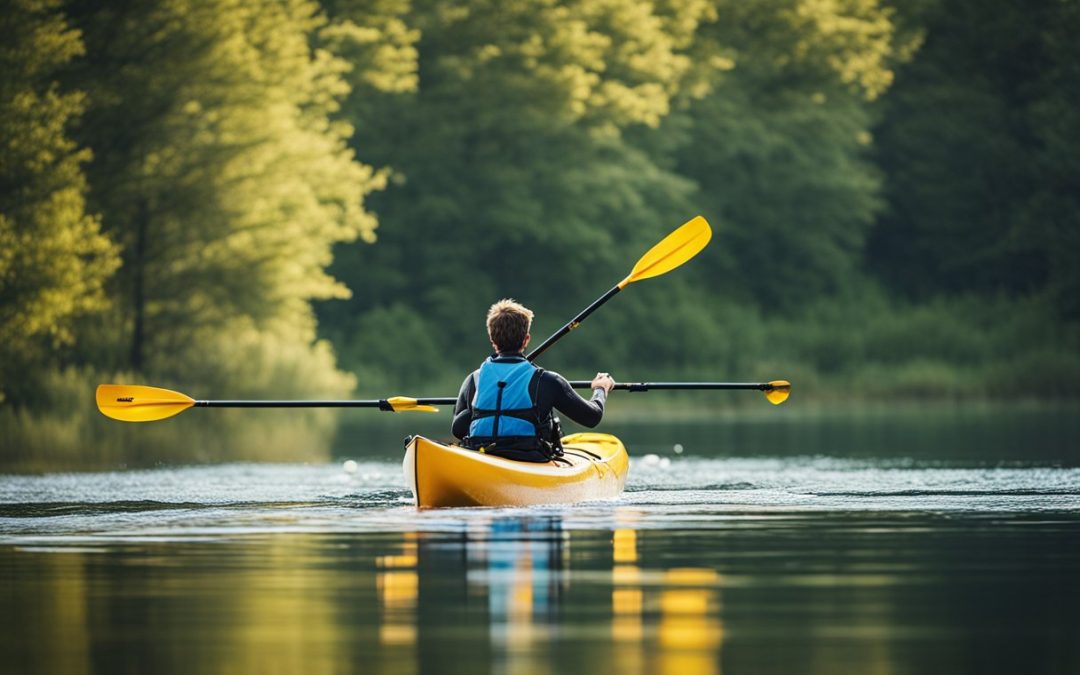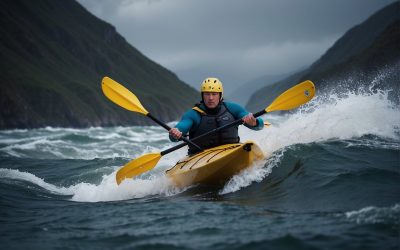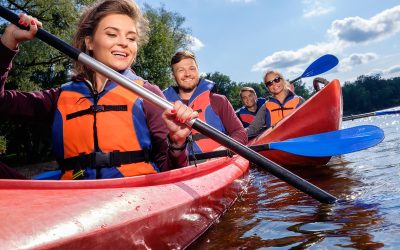Planning a multi-day kayak trip can be a thrilling adventure for outdoor enthusiasts. Careful planning is crucial to ensure a safe and enjoyable experience, whether solo or group excursion. From choosing the right equipment to mapping out the route, several factors must be considered before embarking on a multi-day kayak trip.
Selecting the appropriate equipment is one of the first steps in planning a multi-day kayak trip. This includes a kayak, paddles, life jacket, and other necessary gear. Choosing a kayak that suits the trip‘s conditions and is comfortable for the paddler is essential.
Additionally, the paddles should be the right size and weight for the paddler, and the life jacket should fit properly and be Coast Guard-approved. Once the equipment is selected, it’s essential to pack wisely and efficiently to ensure that all necessary items are included without overpacking.
Identifying the Purpose of Your Trip

Before planning a multi-day kayak trip, it’s essential to identify the purpose of the trip. This will help you determine the length of the trip, the type of kayak and gear you’ll need, and the location. Some everyday purposes for a multi-day kayak trip include:
- Adventure: If you’re looking for an adventure, consider a trip with rapids or rough waters. Make sure to choose a location that matches your skill level and experience.
- Relaxation: If you want a more relaxing trip, consider a calm lake or river. This trip is perfect for those who want to enjoy the scenery and wildlife.
- Fishing: If you’re planning a fishing trip, make sure to choose a location that is known for its fishing. Research the types of fish in the area and the best time of year to catch them.
- Exploration: If you want to explore new areas, consider a trip with multiple locations. This will allow you to see different parts of the area and experience different types of water.
Once you’ve identified the purpose of your trip, you can begin to plan the details. Remember that the trip’s purpose may change as you plan, so be flexible and open to new ideas.
Choosing the Right Kayak

When planning a multi-day kayak trip, choosing the right kayak is crucial. The right kayak can make the trip more enjoyable, while the wrong kayak can lead to discomfort and even danger. Here are some factors to consider when choosing a kayak for a multi-day trip:
- Size and Weight – Kayaks come in different sizes and weights, and choosing one that fits the paddler and the gear they will be carrying is essential. A kayak that is too small or too light may not be able to handle the weight of the gear, while a kayak that is too big or too heavy may be challenging to maneuver.
- Type of Kayak – There are different kayaks, each with advantages and disadvantages. Sit-on-top kayaks are famous for their ease of use and stability, while sit-in kayaks are better suited for colder weather and rougher waters. Touring kayaks are designed for longer and more comfortable trips, while whitewater kayaks are built for speed and maneuverability.
- Material – Kayaks can be made of different materials, such as plastic, fiberglass, or carbon fiber. Plastic kayaks are durable and affordable but heavier than other materials. Fiberglass kayaks are lighter and more maneuverable but more expensive. Carbon fiber kayaks are the lightest, most expensive, and most fragile.
- Features – Kayaks have various features, such as storage compartments, adjustable seats, and rudders or skegs. These features can make the trip more comfortable and convenient, but they can also add weight and cost.
Choosing the right kayak for a multi-day trip requires careful consideration of the paddler’s needs and preferences. Testing different kayaks and consulting experts to ensure a safe and enjoyable trip is essential.
Mapping Your Route
When planning a multi-day kayak trip, mapping your route is crucial in ensuring a safe and enjoyable journey. This section will cover some important factors when mapping out your route.
- Researching Waterways – Before setting out on your trip, it’s essential to research the waterways you will be traveling on. This includes understanding the river’s flow or current of the ocean and any obstacles or hazards that may be present. Consult with local guides, maps, and online resources to understand the area’s waterways better.
- Considering the Weather and Tides – Weather and tides can significantly impact your trip, so it’s essential to consider them when mapping your route. Check weather forecasts and tide charts for the area you will travel, and plan your route accordingly. Be aware of potential hazards during certain weather conditions, such as high winds or heavy rain.
When mapping your route, it’s essential to be flexible and adaptable. Unexpected weather or changes in water conditions may require you to alter your plans, so it’s essential to have backup options. By taking the time to research and plan your route, you can ensure a safe and enjoyable multi-day kayak trip.
Packing Essentials
Gear and Equipment
When planning a multi-day kayak trip, it’s essential to pack the right gear and equipment to ensure a comfortable and safe journey. Here are some essentials to consider:
- Kayak: Choose a kayak appropriate for your skill level and the type of water you’ll be paddling in. Ensure it’s in good condition and has all necessary accessories, such as a paddle, spray skirt, and life jacket.
- Tent: A lightweight and waterproof tent is essential for camping. Make sure it’s easy to set up and take down and has enough space for you and your gear.
- Sleeping bag and pad: Choose an appropriate one for the expected temperatures and terrain. A good sleeping bag should be lightweight and compressible, while a pad should be comfortable and insulating.
- Cooking gear: Pack a lightweight stove, fuel, pot, utensils, and food storage containers. Make sure you have enough fuel and food for the entire trip, and plan your meals.
Food and Water
Proper nutrition and hydration are critical to a successful kayak trip. Here are some tips for packing food and water:
- Water: Bring plenty of water and a water filtration system to ensure you have access to clean drinking water along the way. Depending on the weather and your activity level, plan to drink at least 2-3 liters of water daily.
- Food: Choose lightweight and non-perishable foods that are easy to prepare and provide plenty of energy. Some good options include trail mix, energy bars, dehydrated meals, and instant oatmeal.
Safety Kit
Safety should always be a top priority when planning a kayak trip. Here are some items to include in your safety kit:
- First aid kit: Pack a basic first aid kit with items such as bandages, antiseptic, pain relievers, and insect repellent.
- Navigation tools: Bring a map, compass, and GPS device to help you navigate.
- Communication devices: Pack a whistle, signal mirror, and waterproof phone or radio to call for help in an emergency.
- Personal flotation device: Always wear a properly fitting life jacket when kayaking, and make sure it’s in good condition.
By packing these essentials, you’ll be well-prepared for your multi-day kayak trip and can focus on enjoying the scenery and adventure.
Navigating and Paddling Techniques

When planning a multi-day kayak trip, it is vital to have a good understanding of basic paddling techniques and navigation skills. Here are some tips to help you navigate and paddle efficiently during your trip:
- Navigation Bring a map and compass; even if you are familiar with the area, having a map and compass with you is always a good idea. These tools can help you navigate in case of unexpected weather or other circumstances.
- Know how to read the water: Understanding how to read the water can help you navigate through rapids and other obstacles. Look for changes in the water’s color and flow to determine the safest route.
- Use landmarks: Look for mountains, trees, or buildings to help you navigate. These can serve as helpful reference points when using a map and compass.
Paddling Techniques - Use proper posture: Sit straight and flat your feet on the footrests. This will help you maintain good balance and reduce strain on your back.
- Use a proper grip: Hold your paddle with both hands, with your hands shoulder-width apart. Use a relaxed grip to prevent fatigue.
- Use proper stroke technique: Use a smooth, fluid motion to paddle. Keep your arms straight, and use your torso to rotate the paddle. This will help you generate more power and reduce the risk of injury.
Following these tips, you can navigate and paddle safely and efficiently during your multi-day kayak trip.
Choosing a Campsite

When planning a multi-day kayak trip, choosing a suitable campsite is crucial. The ideal campsite is safe and comfortable and minimizes your impact on the environment. Here are some factors to consider when choosing a campsite:
- Location: Look for a site sheltered from the wind and waves and has access to fresh water and firewood if you plan on having a campfire. Also, ensure the site is close enough to other campsites to ensure privacy.
- Terrain: Choose a site that is flat and free of rocks and roots to ensure a comfortable sleeping surface. Avoid camping on fragile vegetation or areas prone to flash floods.
- Wildlife: Make sure the site is not in a high-traffic area for wildlife and is not a famous feeding ground for bears or other animals. Store your food properly to avoid attracting wildlife to your campsite.
Leave No Trace Principles
When setting up camp, following Leave No Trace principles to minimize environmental impact is crucial. Here are some tips to help you set up camp responsibly:
- Pack it in, pack it out: Bring a trash bag and pack out all of your trash, including food scraps and toilet paper. Leave the campsite cleaner than you found it.
- Use established campsites: Whenever possible, use established campsites to minimize your impact on the environment. Avoid trampling on vegetation and disturbing wildlife habitats.
- Keep fires small and contained: If you plan on having a campfire, use established fire rings and keep the fire small. Use dead and downed wood for fuel; never cut down live trees or vegetation.
Emergency Preparedness

When planning a multi-day kayak trip, it is essential to prepare for emergencies. Here are some tips to ensure you are ready for any unexpected situations:
- First Aid Kit – Pack a kit with essential items such as bandages, gauze, antiseptic, and pain relievers. Including personal medications and a basic first aid, manual is also recommended.
- Communication Devices – Bring communication devices such as a waterproof radio or a satellite phone. These devices can be crucial in an emergency, allowing you to call for help or communicate with rescue teams.
- Navigation Tools – Always carry navigation tools such as a compass, map, and GPS. These tools will help you stay on track and avoid getting lost. Make sure to keep them in a waterproof container to prevent damage.
- Emergency Shelter – Pack a lightweight shelter such as a tarp or bivy sack. These items can provide shelter in case of unexpected weather conditions or if you need to spend the night outdoors.
- Emergency Food and Water – Always carry extra food and water in an emergency. Pack high-energy snacks such as trail mix, energy bars, and jerky. Bringing a water filtration system or purification tablets is also recommended to ensure access to safe drinking water.
- Emergency Signaling Devices – Bring emergency signaling devices such as flares or a whistle. These items can help signal for help and attract attention in an emergency.
Post-Trip Care for Your Kayak
After a multi-day kayak trip, it is essential to properly care for your kayak to ensure it remains in good condition for future trips. Here are some tips for post-trip care:
- Cleaning – The first step in post-trip care is cleaning your kayak. Rinse it thoroughly with fresh water to remove any salt, sand, or debris that may have accumulated during the trip. Use mild soap and a soft sponge to clean the kayak’s exterior and interior. Avoid harsh chemicals or abrasive materials that could damage the kayak’s surface.
- Storage – Once your kayak is clean and dry, it is essential to store it properly. Store your kayak in a cool, dry place away from direct sunlight. If you store your kayak outside, use a cover to protect it from the elements. Ensure the kayak is stored in a way that does not stress its components.
- Maintenance – Kayaks require regular maintenance to keep them in good condition. After a multi-day trip, take the time to inspect your kayak for any damage or wear and tear. Check the kayak’s hull for any cracks or dents, and inspect the hardware and fittings for any signs of corrosion or damage. Replace any damaged or worn parts before your next trip.
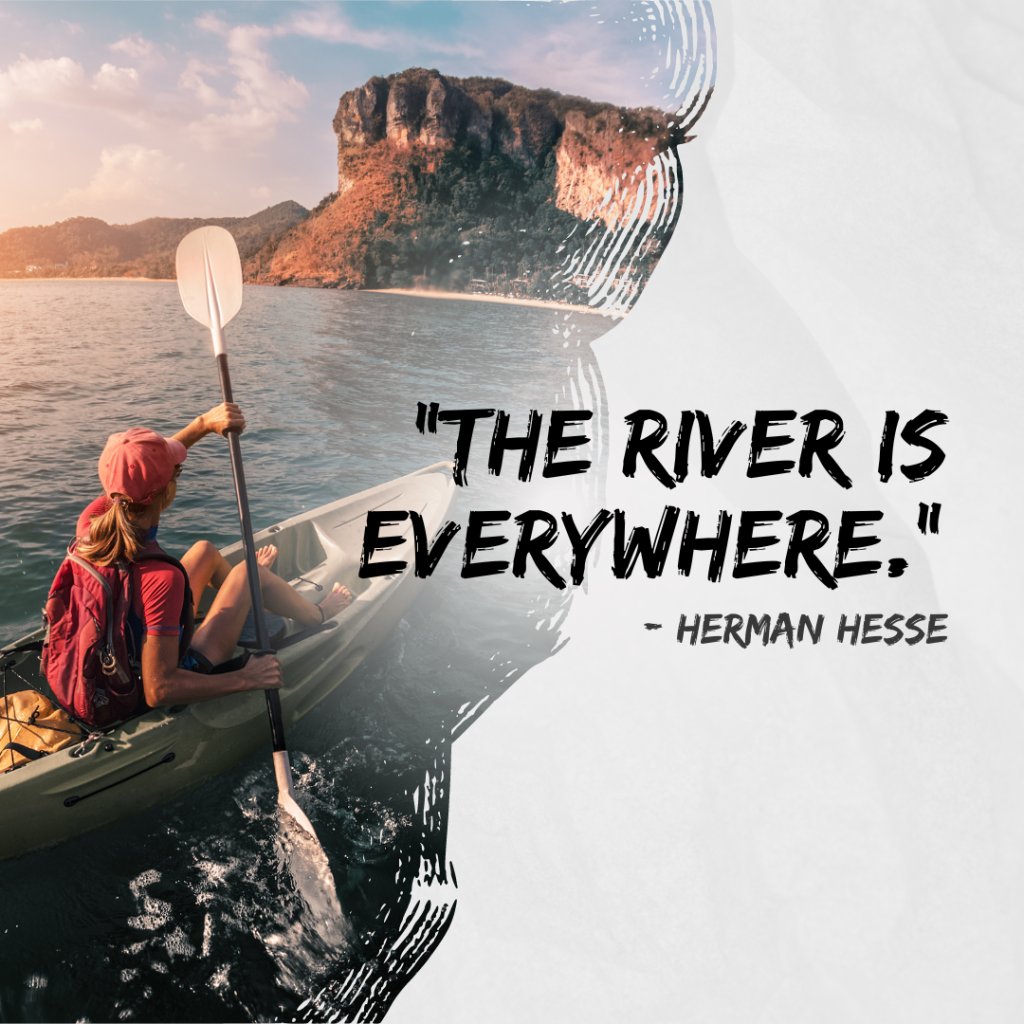
Additional Tips
Here are some additional tips for post-trip care:
- Keep your kayak out of direct sunlight, as prolonged exposure to UV rays can damage the kayak’s surface.
- Avoid dragging your kayak across rough surfaces, which can cause scratches and other damage.
- Store your kayak upside down to prevent warping or deformation of the hull.
- Inspect your kayak for any loose or damaged components if you notice any unusual noises or vibrations while paddling.
- Following these post-trip care tips ensures that your kayak remains in good condition for future trips.



